TONEWHEELS HURDY-GURDY
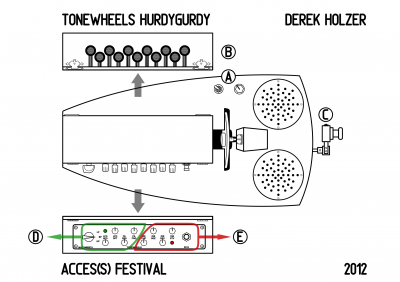
TONEWHEELS HURDY-GURDY
(VIELLE A ROUE OPTOÉLECTRONIQUE)
DEREK HOLZER for ACCES(S) FESTIVAL
PAU FRANCE, OCT 2012
TONEWHEELS is an experiment in converting graphical imagery to sound, inspired by some of the pioneering 20th Century electronic music inventions, such as the Light-Tone Organ (Edwin Emil Welte, 1936 Germany), the ANS Synthesizer (Evgeny Murzin, 1958 USSR), and the Oramics system (Daphne Oram, 1959 UK). Transparent tonewheels with repeating patterns are spun over light-sensitive electronic circuitry similar to that used in 16 & 35mm motion picture projectors to produce sound.
The TONEWHEELS Hurdy-Gurdy presented at Acces(s) is not an “interactive” artwork in the common sense. While it does not reward the impatient museum visitor with flashing lights and noises at the simple touch of the button, it does invite participation in the process of technological music creation. Although it first appears to be a very traditional instrument known to many folk-music cultures, it functions in a very different way which can only be discovered by playing it.
The artist would like to thank Tobias Traub of Oroborus Customs e.K. and Carlo Crovato for their invaluable assistance in creating this instrument. Circuits designed by Jessica Rylan and Eric Archer are also used within the system.
More information on the TONEWHEELS project can be found at http://umatic.nl/tonewheels.html
INSTRUCTIONS
This instrument functions by turning light into sound. The audience is invited to experiment with it, provided that they read the following instructions and handle the instrument carefully.
—GETTING STARTED
1) Pick the instrument up by the strap and put it around your neck. You will hold the instrument as seen in the painting shown below, “Jeune fille à la vielle”, by Jules Richomme (1882). Please handle the instrument by the edges. Do not handle the triangular area in the middle, this area is very delicate!
2) Activate the power switch and adjust the volume knob at LOCATION A.
3) Using your the fingers of your left hand, locate the pressure-sensors at LOCATION B. When you press these, you will see different lights turn on at the center of the instrument.
4) With your right hand, turn the crank at LOCATION C. This will spin a wheel printed with transparent patterns. These patterns break up the light which falls on several light sensors, creating the basic tone of the instrument.
5) The sound of the instrument passes through a filter which can change its tone. The controls for the filter are marked in green at LOCATION D. The switch controls whether low, middle or high frequencies are passed through the filter. The controls marked “LFO” can be used to modulate the filter, while the controls marked “FIL” are used to affect the frequency and resonance of the filter.
6) There is also a distortion effect, marked in red at LOCATION E. The distortion only works when the large button has been clicked, and the red light is on. The four controls marked “DIS” control different aspects of the distortion.
7) When you are finished, please gently set the instrument down flat on the table and turn the power off.
—TIPS
1) The speed of the wheel affects the basic frequency of the sound
2) The filter and distortion shape that sound, but can also produce sounds of their own.
3) A good place to start is with the distortion off and all the controls set to the middle position.
4) There are some control settings which may not produce any sound at all!

“Jeune fille à la vielle”, by Jules Richomme (1882)
TONEWHEELS HURDY-GURDY(VIELLE A ROUE OPTOÉLECTRONIQUE) from macumbista on Vimeo.
FREIZEIT MACHT FREI
This hurdy-gurdy project might be the most complicated thing I have ever tried to build, involving quite a bit more technical research and development by myself and several others than I expected at first. All in all, we took about two months to build something that really needed a year to do right. Live and learn, unfortunately in that order. So when it was all over, and I finally had my first free day in ages, I took a little walk in les Pyrénées with Vincent Meyer…
Tags: commision, france, photo, synthesizer, tonewheels, video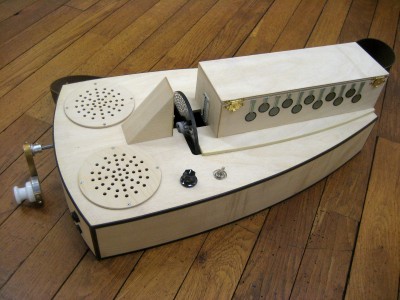
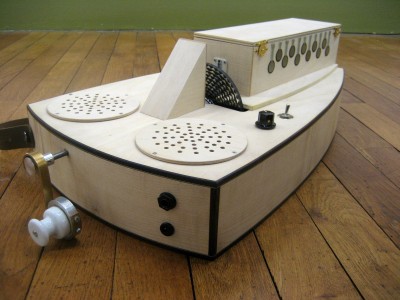
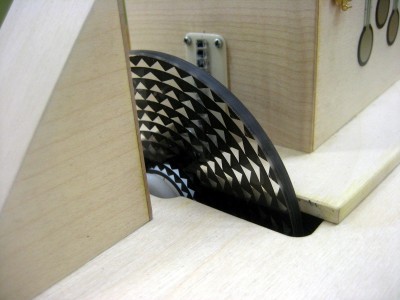
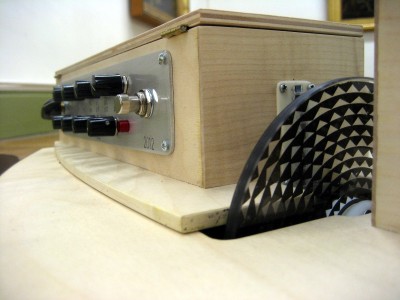
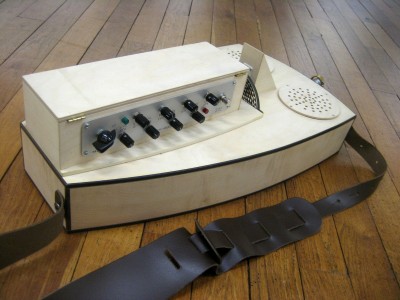
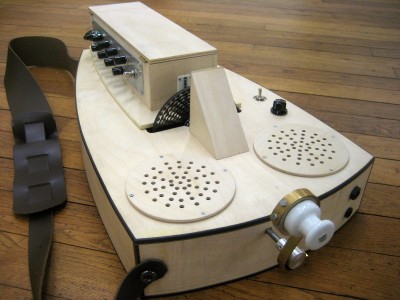
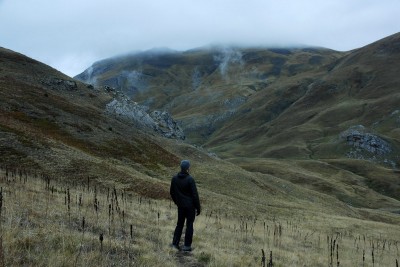
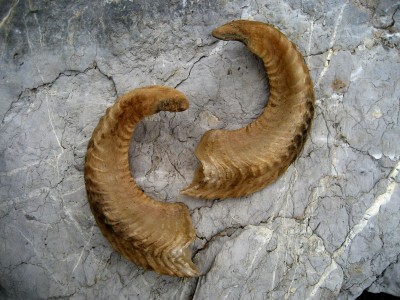

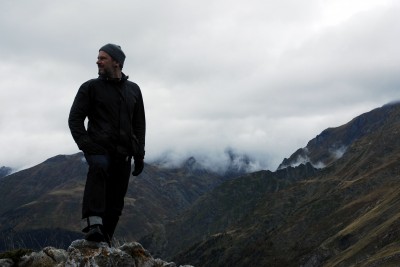
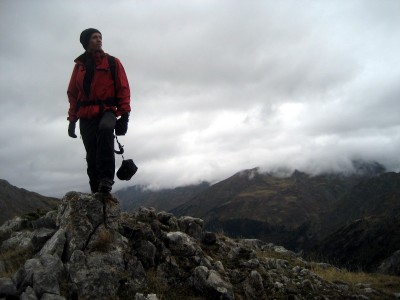


Tonewheels Hurdy-Gurdy – by Macumbista – Derek Holzer…
Macumbista aka Derek Holzer says about his new electronic instrument TONEWHEELS HURDY-GURDY (VIELLE A ROUE OPTOÉLECTRONIQUE) DEREK HOLZER for ACCES(S) FESTIVAL PAU FRANCE, OCT 2012 TONEWHEELS is an experiment in converting graphical imagery to sound, i…
[…] The Hurdy-Gurdy is described on Derek’s blog: http://macumbista.net/?p=3020 […]
[…] The Hurdy-Gurdy is described on Derek’s blog: http://macumbista.net/?p=3020 […]
[…] hurdy gurdy wasn’t a strange and wondrous instrument already, Berlin-based sound artist Derek Holzer has built one that eats light and spits out glorious waves of distortion and noise. The instrument […]
[…] hurdy gurdy wasn’t a strange and wondrous instrument already, Berlin-based sound artist Derek Holzer has built one that eats light and spits out glorious waves of distortion and noise. The instrument […]
[…] More information on this project can be found at macumbista.net/?p=3020 […]